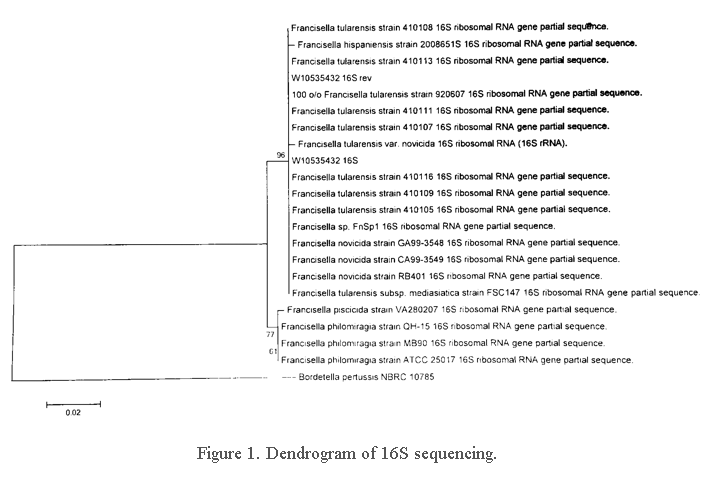
![]() Contributed by Jacob A Smith, MD. William Pasculle, ScD.
Contributed by Jacob A Smith, MD. William Pasculle, ScD.
![]() Department of Pathology, University of Pittsburgh Medical Center, Pittsburgh, PA, USA
Department of Pathology, University of Pittsburgh Medical Center, Pittsburgh, PA, USA
CASE PRESENTATION
A teenager presents to an outside emergency department with complaints of left eye pressure, itchiness, yellow drainage, left jaw pain and difficulty opening the mouth. The teenager was camping in Ohio. A computed topography was performed on the orbit which demonstrated preseptal cellulitis without abscess formation. The plan at that time was to be discharged home with polymyxin/trimethoprim ophthalmology drops and oral sulfamethoxazole/trimethoprim. The patient returned to the emergency department one day later with worsening of symptoms to include eye pain, redness, sore throat, neck pain, headache, fever (101 F), and surrounding swelling. The patient was admitted to the hospital for intravenous ceftriaxone and clindamycin. Blood cultures after two days were negative. At this point, the patient was transferred to a larger hospital. Laboratory values upon admission were as follows: white blood cell count (WBC) = 8.1, platelets (PLT) = 280, hemoglobin = 14.5, hematocrit = 41.1. erythrocyte sedimentation rate (ESR) = 15 and C-reactive protein (CRP) = 3.5. On physical exam there was significant left conjunctival injection, watering, and periorbital swelling. The extraocular movements were intact. Ophthalmology was consulted with the impression of hemorrhagic conjunctivitis commonly due to adenovirus. Ophthalmology recommended artificial tears, discontinue antibiotics and discharge home to follow up in clinic in one to two weeks. Two days later, the patient returned to the emergency department with a fever of 103 F. The patient had decreased activity and decreased intake of fluids. There was continued complaints of headaches, neck pain, sore throat, and discomfort in the left eye. Physical exam at this time demonstrated left eye pain, redness, swelling, and a swollen lymph node on the left side of the face. Laboratory values at this time were as follows: WBC = 16.1, PLT = 402, hemoglobin = 12.8, hematocrit = 37.2, ESR = 48 and CRP = 9.47. Ophthalmology was consulted again with a recommendation to consult infectious disease and send testing for Bartonella and Tularemia. The infectious disease team discovered that during the camping trip the patient handled a raccoon without gloves. Infectious disease recommendations were to take doxycycline and to send serologic testing for Lyme disease, Bartonella, Ehrlichia, and Tularemia. In addition, a conjunctival swab was taken for culture. Originally, the conjunctival swab was sent to a small microbiology laboratory. The specimen went through routine specimen processing which resulted in the isolation of a small Gram-negative rod which underwent Kirby Bauer susceptibility testing. No identification was made so the specimen was referred to a larger laboratory. At the larger laboratory the specimen did not grow on blood agar plate but demonstrated some growth on chocolate agar plate. A gram stain was performed on the culture which demonstrated small gram-negative rods. The presumptive identification was Haemophilus because of the gram stain pattern and the clinical history of an ocular source. The organism was examined by MALDI-TOF which did not identify the organism. At this point 16S sequencing was performed. The results of the 16S sequencing (Figure 1.) demonstrated a probable identification of Francisella tularensis. The isolate was forwarded to the State Health Department Laboratory who confirmed the identification by PCR and direct immunofluorescence. The patient followed up in clinic a week later with reports that the eye is much better with no complaints of pain, redness, tearing, discharge or blurry vision.
